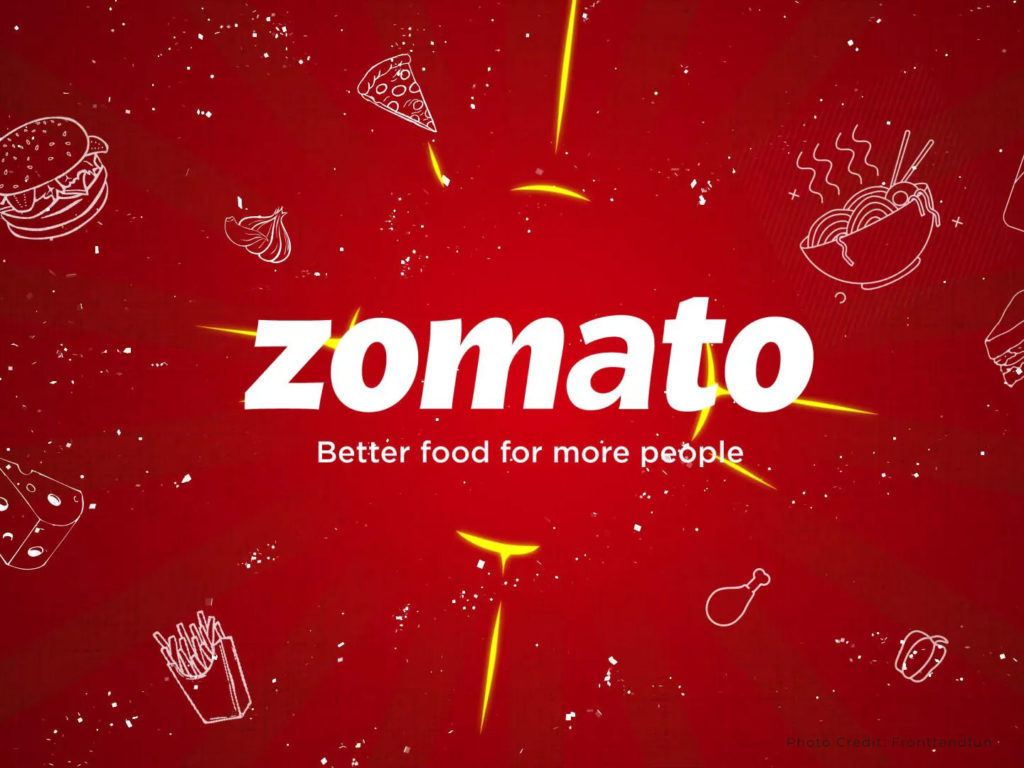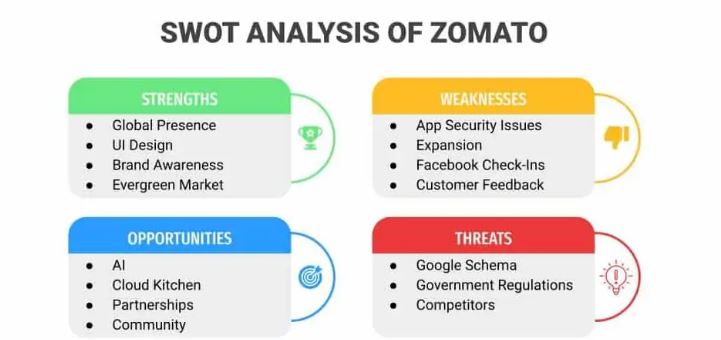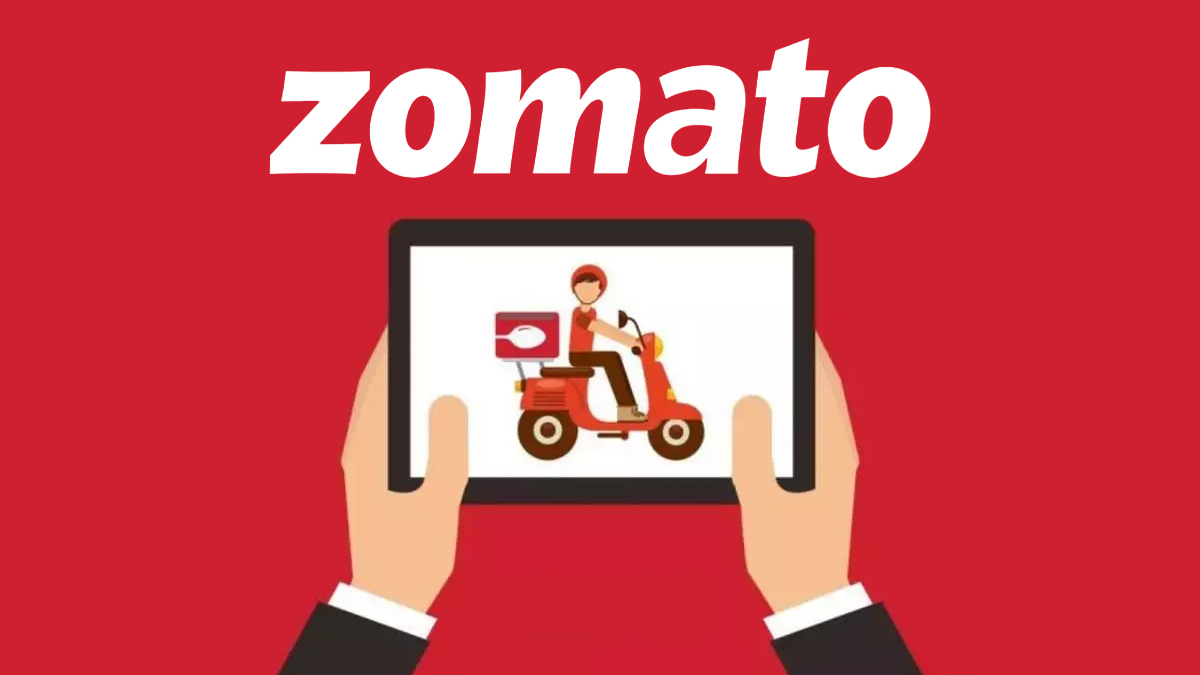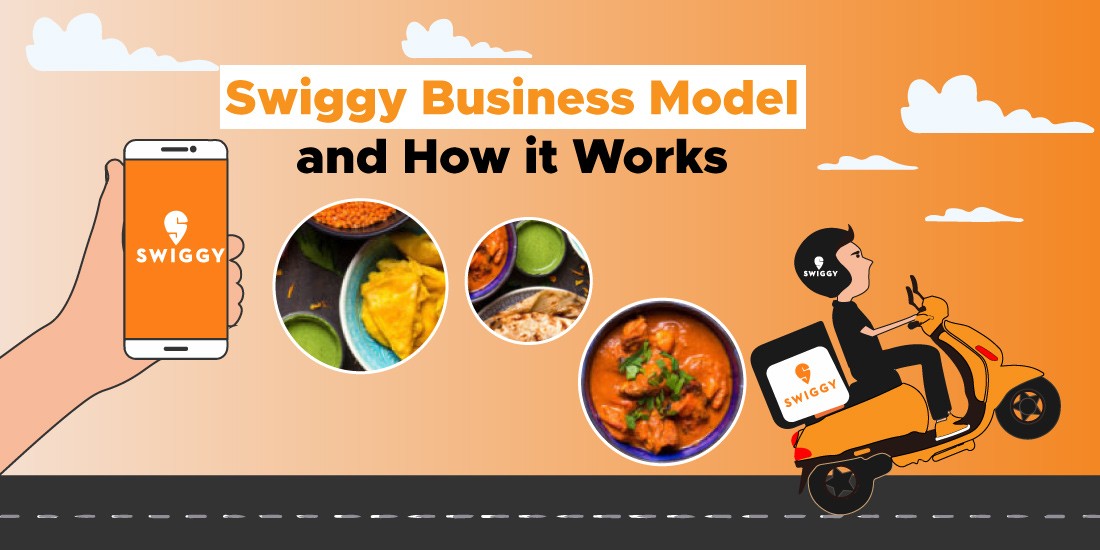Introduction
By integrating different restaurants and allowing customers to select restaurants, leave reviews and check listings, and accessibility according to their choice of food, Zomato’s business strategy has changed the food business sector. It offers analytical information for numerous eateries in 24 countries around the world. Its Business model was very different from Swiggy and Foodpanda.

Background
Zomato was founded in 2008 by Deepinder Goyal and Pankaj Tshaddah. It began from the beginning with the name Foodiebay, which became Zomato in 2010. Zomato extended to Sri Lanka, Qatar, Turkey, Brazil, Indonesia, etc. in other countries.

Business Model
Zomato focuses on the QAAA model, which promises and offers customers and partners quality, accessibility, accessibility, and portfolio.
- Hyperpure constantly helps to keep the food supplies high. Hyperpure Zomato’s project offers fresh, squeaky, clean, and high-quality meals to its partnering eateries.
- The popularity of Zomato Gold speaks to Zomato’s efficiency in several fascinating choices. Zomato always strives for the best and doesn’t leave any stone unturned. They deliver the best information to their consumers and assist them to make an informed choice as readable as possible.
Customer Base
- Zomato’s key customers are consumers and restaurants alike. Those who hunt for different restaurants, according to their budget, locality, and desired tastes, will be able to find different restaurants and a menu of numerous restaurants in their areas.
- Zomato contains extensive client data collected by clients who evaluate and rate restaurants.
- Zomato’s core consumer is young people between 18 and 35 years of age and those who often want to eat with friends and colleagues.
Revenue Model
Since its inception, Zomato has increased its global position in the culinary business. Zomato has produced numerous streams of income, and some are given here, helping you understand how Zomatos makes enormous profits by using its business model and diversity.
Partnerships
- To extend their virtual food presence in European countries Zomato has established a collaboration with London & Partners.
- For Uber Taxi users Zomato has allied to arrange a mode of transport to their restaurant. The smart invention eliminates the ability to cope with two different applications.
- It is also associated with payment apps like PayPal and visa.
SWOT Analysis
Strengths
- Evergreen Market: The restaurant market is the evergreen market. Sure, there may be recessions and other downturns that can affect the industry. But this industry will always be around and it will only grow as disposable income increases.
- Brand Image: Zomato has earned a good image among its customers through numerous awards. For example, Online Ordering Award in India 2019, Asia-Pacific Gold Winner 2015, Users’ Choice Award 2015, and many other awards over the years.
- Spectacular Marketing: Zomato marketing strategy works both offline and online for its own marketing style. The print ads are funny and create an instant connexion with the audience. Zomato is strong in social media marketing and uses a combination of ATL and BTL strategies to attract and retain customers.
Weaknesses
- App Security Issues: A major problem for Zomato is security issues due to which the app was hacked and at least 17 million user data was copied. Such security problems are a nightmare for internet companies.
- Expansion: when you consider that the app has established itself in 24 countries, it’s a good expansion. But at the same time, the app was launched 7 years ago, and with the resources available to Zomato, expansion should happen much faster.
- Facebook Check-Ins: Besides apps like this, word of mouth still strikes zomato in many places, and at the same time Facebook cheque-ins are a strong competitor where people may not need Zomato. So it’s an app for early adopters, but definitely not for laggards.
- Customer Feedback: The bad reviews and negative customer feedback drive many users away from the platform. Most importantly, when people update their status via cheque-in, they mention the location of the restaurant, not Zomato, that allowed them to visit.
Opportunities
- Advancements In AI: Zomato is an online food platform. The company should invest more resources in artificial intelligence and automated technology. That would open the doors to a whole new world in terms of better security, updated features, and a more convenient user experience.
- Cloud Kitchen: Zomato is launching the concept of cloud kitchen, where restaurants do not need a physical space to sell their food. Instead, they will sell through Zomato and other delivery apps.
- Partnership: Partnering with mobile phone manufacturers to make zomato a pre-installed app.
Threats
- Google: One of the biggest threats to Zomato is Google’s Schema module, in which Google locations themselves are included in restaurant recommendations. Even on the Google home page, you’ll see the Google Maps page where you can search for restaurants near you. Since Google is such a big brand, Zomato faces a lot of competition.

KEY HIGHLIGHTS
- Strong User Experience
- Evergreen Market
- World-Class Marketing
Conclusion
Zomato has entirely revolutionized the functioning of the food and restaurant business.The Business Model of Zomato is properly planned and coordinated, covering several parts of the enterprise as sources of revenue.




